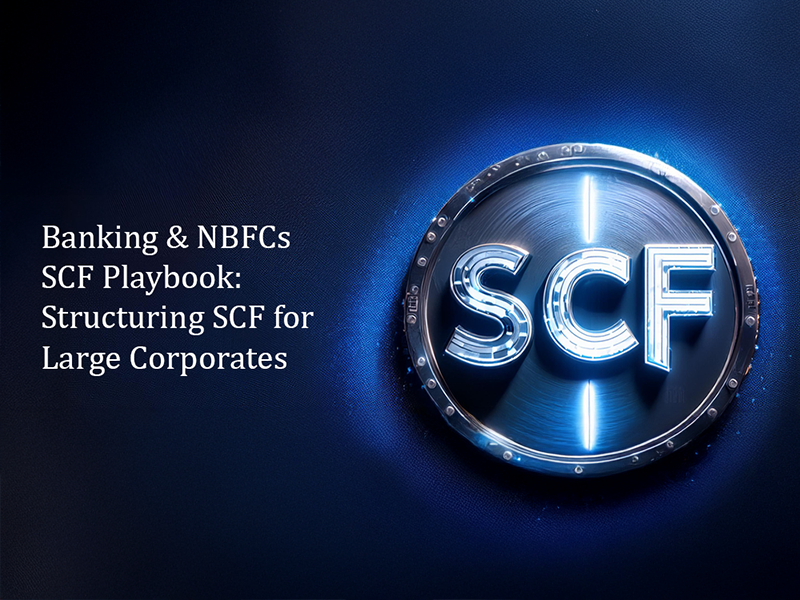Lessons of Supply Chain Finance: Diversify or Die Trying
If transparency is the vegetable of Supply Chain Finance (SCF), then diversification is its insurance policy.
Think about it—would you invest all your money in a single stock and hope for the best? (If yes, we need to talk about your risk management skills.) Yet, so many companies make this exact mistake in SCF, putting all their funding eggs in one basket—one lender, one funder, one financial partner.
And guess what happens when that one source pulls out? Game over.
Diversification isn’t just a fancy buzzword—it’s the difference between thriving and scrambling for survival. So, let’s talk about why companies keep getting it wrong, how to fix it, and the best strategies to keep SCF rock solid.
1. The “Single Lender” Trap
Many businesses rely on one financial institution for SCF. It’s comfortable, convenient, and it works—until it doesn’t. If that lender tightens credit, faces liquidity issues, or just decides to exit the business, your entire working capital cycle is suddenly on life support.
2. Over-Reliance on a Few Large Buyers or Suppliers
If 80% of your SCF volume is tied to two or three big buyers, you’re basically hostage to their payment terms and business cycles. If they delay payments, reduce orders, or face financial trouble, your cash flow takes the hit.
3. Ignoring Market Volatility
The finance world loves surprises (just kidding—it hates them). But shocks like interest rate hikes, economic slowdowns, or geopolitical chaos can dry up funding overnight. If your SCF setup isn’t diversified, you might find yourself scrambling for alternative financing at the worst possible time.
Let’s talk about real-world disasters that happened when companies forgot to hedge their bets.
🔴 The Greensill Collapse
Remember Greensill? The SCF darling that went from billion-dollar unicorn to financial cautionary tale in record time? One of the biggest reasons for their downfall was a lack of diversification—they relied too heavily on a few key funders and clients (looking at you, SoftBank and Gupta Group). When one domino fell, the whole system crashed.
🔴 Carillion’s Downfall
UK construction giant Carillion played a dangerous game with SCF, stretching supplier payments to extreme limits. Their financing was so dependent on a handful of funders that when confidence wavered, the business collapsed—leaving behind thousands of unpaid suppliers and a cautionary tale for SCF practitioners everywhere.
✔️ 1. Work with Multiple Funders
One bank? Too risky.
One NBFC? Still risky.
One fintech? Even riskier.
SCF should never be dependent on a single financial institution. Use multiple lenders, fintech platforms, and institutional investors to spread risk and avoid reliance on any one funding source.
✔️ 2. Expand Your Supplier and Buyer Base
If a huge chunk of your SCF is concentrated in just a few large buyers or suppliers, you’re one bad quarter away from disaster. Diversify your portfolio by working with multiple buyers and suppliers across industries, geographies, and credit profiles.
✔️ 3. Mix Up Your Financing Structures
Relying only on traditional invoice discounting? Bad move.
Tied only to reverse factoring? Risky.
A robust SCF program includes a mix of techniques, such as:
- Factoring
- Reverse Factoring
- Dynamic Discounting
- Asset-Backed Lending
The more tools in your SCF arsenal, the more resilient your business.
✔️ 4. Keep a Plan B (and C, and D…)
SCF is great—until it isn’t. Have backup financing options, whether it’s traditional credit lines, alternative lenders, or even internal cash reserves. Because when funding dries up, the last thing you want is to be caught without a safety net.
Lack of diversification in SCF isn’t just a bad strategy—it’s an existential risk.
Companies that put all their financing, buyer, or supplier eggs in one basket often find themselves in a crisis the moment market conditions shift. The good news? A well-diversified SCF program isn’t just possible—it’s essential.
So, let’s make this simple:
✔️ More funders = Less risk.
✔️ More buyers & suppliers = More stability.
✔️ More financing options = Better resilience.
Diversify, or prepare for one very painful wake-up call.



